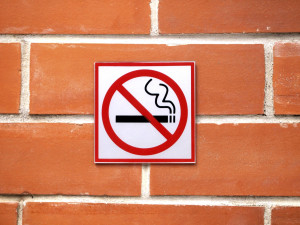 The Florida Lung, Asthma, and Sleep Study Specialists bring you a story this week, from U.S. prisons. It’s a surprising statistical story that reflects the importance of avoiding smoking in order to avoid lethal lung disease.
The Florida Lung, Asthma, and Sleep Study Specialists bring you a story this week, from U.S. prisons. It’s a surprising statistical story that reflects the importance of avoiding smoking in order to avoid lethal lung disease.
Jason got in with the wrong crowd, and he ended up in prison. Surprisingly, that’s when things got better for him. He is looking forward to completing a course in welding, and, with good behavior, leaving prison on parole in less than a year. In prison, he found more time to work out, and he actually ate better than he ever had before. In fact, Jason’s allergies and colds had even eased off.
 When he leaves the prison, he will be a new man in many ways, one of which is that he will be a non-smoker. His story is reflected in many prisoners’ lives in recent years, since there has been a ban on smoking in many U.S. prisons.
When he leaves the prison, he will be a new man in many ways, one of which is that he will be a non-smoker. His story is reflected in many prisoners’ lives in recent years, since there has been a ban on smoking in many U.S. prisons.
Because of that ban, Jason will not be suffering an early death from smoking related illnesses such as lung cancer, COPD, or heart disease.
In fact Jason is part of a trend recently researched and published in the BMJ. (British Medical Journal) Scientists posed the question: Are prison smoking bans linked to substantial fall in deaths among U.S. inmates? The results have been tabulated, and research scientists say “Yes!”
In fact, smoking related “deaths were cut by up to 11 percent in state prisons with long-term bans in place.”

Prison smoking bans are associated with this substantial improvement. Let’s look at some numbers:
In 2011, state prisons held 1.4 million people. Many of them were smokers: 50 to 83 percent!
The most common causes of deaths related to smoking among people in prison were lung cancer, heart disease, stroke, and chronic lung disease.
Statistics placed smoking attributable mortality at 360 prisoners per 100,000.
In the general U.S. population, this mortality statistic, attributed to smoking-related diseases, is only 248 people per 100,000.
Another area they calculated involved the years of potential life lost, and they found that, before smoking bans were in effect, 5,149 years of productive life were lost to diseases associated with cigarette smoking, per 100,000, prisoners. Compare that figure to 3,501 years lost to these diseases per 100,000 people in the general population.
In the years from 2001 to 2011, the number of states with the smoking ban in their prisons increased from 25 to 48.
“In prisons, the mortality rate from smoking related causes was lower (110 per 100,000) during years with a ban than during years without a ban (129 per 100,000).”
“No Smoking” Prisons quickly discovered “9% reduction in smoking related deaths.”
 The prisons with bans for longer than 9 years gained 11 percent reduction in all smoking related deaths.
The prisons with bans for longer than 9 years gained 11 percent reduction in all smoking related deaths.
Lets break that statistic down: The prison population enjoyed “a 19% reduction in cancer deaths, and a 34% reduction in pulmonary deaths compared with places with no ban.”
The evidence is conclusive, and the researchers wrote, “These findings suggest that smoking bans have health benefits for people in prison…”
Will the man, Jason, in our above story continue his healthy non-smoking attitude after he is released from prison? Only time can tell, and the researchers concede sadly, non-smoking policies and bans “impose limits on individual autonomy and many people resume smoking after release.”
Like many phases of reformed prisoner’s lives, we can only hope they learn from their mistakes, and smoking can be just one of them.
 This article shows the massive public health success available to societies that have a ban on smoking, not just in prisons, but in homes, cities and states.
This article shows the massive public health success available to societies that have a ban on smoking, not just in prisons, but in homes, cities and states.
“California was the first state in the world to ban smoking in public places in 1994 and we are still finding the positive impact of that ban by changing the social norm and having more homes and cities banning smoking,” said Wael K. Al-Delaimy, MD, PhD, professor and chief of the Division of Global Health in the UC San Diego Department of Family and Preventive Medicine.
“These results provide quantitative evidence that smoking bans that are mainly for the protection of nonsmokers from risks of secondhand smoke actually encourage quitting behaviors among smokers in California. They highlight the potential value of increasing city-level smoking bans and creating a win-win outcome.”
The Florida Lung, Asthma and Sleep Specialists thank you for reading our blog this week, and we look forward to continued visits from you as we bring you news about research, symptoms and treatments for human respiratory systems around the world.

